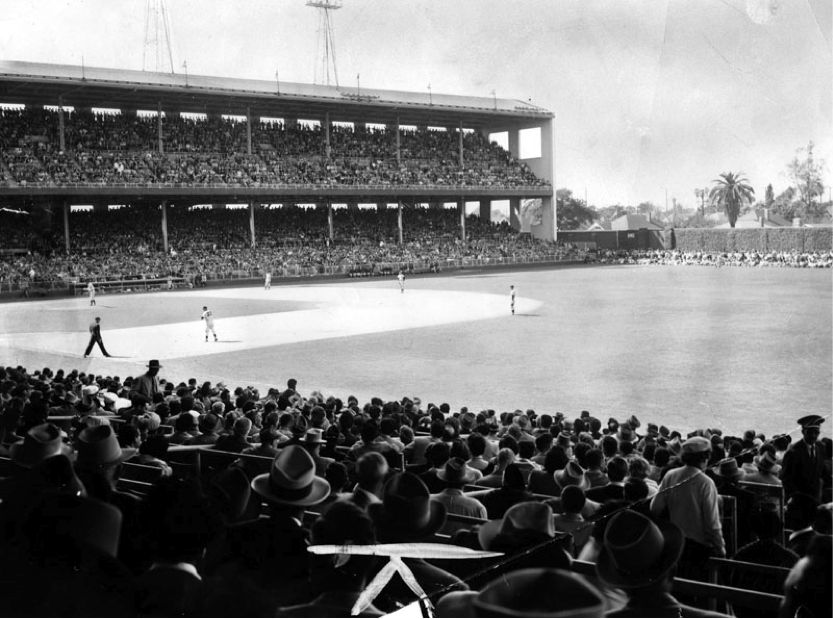
Fans are pictured here watching a baseball game in LA’s Wrigley Field in 1955. | Los Angeles Public Library Photo Collection.
Before Chicago made Wrigley Field an internationally recognizable Major Baseball League landmark, a minor league team called the Angels was playing at another ballpark with the same chewing gum name in South Los Angeles.
The field was located at 42nd Place and Avalon Boulevard, back when the area was known as South Central Los Angeles. According to the National Pastime Archives, the field was dedicated on Sept. 29, 1925 with a crowd of 18,000 attendees. The Angels won their opening game that day against the San Francisco Seals, Los Angeles Magazine reported.
The Los Angeles and Chicago connection was not without reason. Both stadiums’ namesake, William Wrigley, Jr., owned the chewing gum company as well as the Chicago Cubs and Los Angeles Angels Pacific Coast League, according to the National Pastime archives. Chicago’s Wrigley Field was renamed in honor of the owner a year later in 1926. (During spring training, the Windy City-based team trained at another Wrigley-owned California field.)
The Angels, according to the Pastime archives, clenched the Pacific Coast League pennant during their inaugural season. For its time, the ballpark was considerably large. It had a capacity of approximately 30,000, according to Curbed LA.
Because of its proximity to Hollywood, Wrigley Field served as the set for several movies and TV shows. The 1927 film “Babe Comes Home,” starring baseball legend Babe Ruth, was recorded at original Wrigley. According to a film review in the New York Times, Wrigley Field would become a popular location site for future Hollywood baseball flicks. Thirteen more movies were filmed there. “Home Run Derby,” which was an early version of a reality competition show that pitted Major League Baseball players against one another in nine-inning home run contests.
Baseball was abandoned at Wrigley Field when the Brooklyn Dodgers moved West and the Angels headed to Anaheim in 1958. This followed the trend of other major league teams moving west and displacing or dissolving minor league baseball teams.
As the city’s needs expanded, the stadium became multi-purposed. In 1963 — at the height of the Civil Rights Movement — Dr. Martin Luther King, Jr. spoke at a rally in Wrigley Field, according to a photo from the Los Angeles Public Library Database. In 1966, Wrigley was converted for soccer because of its already existing grassy field.
In 1969, with the Angels long gone, the stadium was demolished to make room for the Gilbert Lindsay Park and the Kedren Community Mental Health Center.















Speak Your Mind